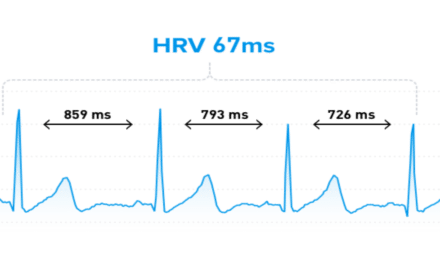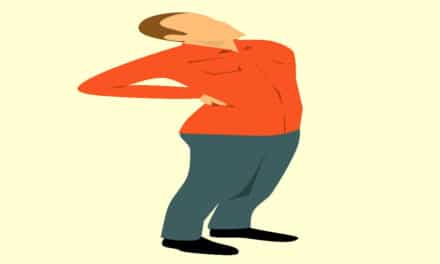Stress affects our body in many ways, from overt to covert forms. Recognizing our stress is the first step to reducing or mitigating stress so we can live healthier lives. Managing the stress in my life is a priority for me because it helps me reduce the effects of Muscular Dystrophy by improving the recovery of my muscles. It also feels great to reduce stress and gain more confidence in dealing with stressful situations and recovering optimally. In this blog, I will address an interesting perspective to become aware of what is stressful for you and do what you can to improve your stress resilience.
The Stress Mechanism
Some of the information from this post will be from Precision Nutrition’s “Effects of Stress On The Body Infographic.” The more overt forms of stress are what we are aware of, including when you feel your heart pounding before you are public speaking or you feel the fatigue in your muscles following strenuous exercise. However, other stressors can accumulate over time to impair the body’s functioning significantly. These can include working out despite tiredness, sleep debt, minor or major relationship issues, and poor food choices. Anything that may not create a direct stress response but can harm your body is in this category.
The article refers to the HPA axis dysfunction or the “hypothalamic-pituitary-adrenal” axis, an interconnected mechanism in the body. It is responsible for producing cortisol, or the stress hormone. The process involved the hypothalamus interpreting the stress, secreting a hormone called corticotropin secreting hormone (CRH). CRH then tells the pituitary glands to release adrenocorticotropin hormone (ACTH). ACTH then tells the adrenal glands to make cortisol and adrenaline.
When we face multiple covert and overt stressors, it can impair the HPA axis, which is critical to helping us have the energy to do things in our lives. This results in cortisol production remaining on when it should be off, inhibiting you from relaxing and recovering. For example, having high cortisol when you are sleeping inhibits the quality of sleep and leaves you less rested in the morning.
Stress Bod
The same article has a quiz that helps you determine your stress score. There are three levels: low, moderate, and high. The term Stress Bod speaks to stress’s impacts on the body. These range from pain and tightness, gut issues, lack of energy, brain fog, constantly getting sick, struggling with weight, and low hormone function. Some ongoing negative stressors that can lead to increased stress in the body include pandemics, conflict with loved ones, financial issues, constant worrying, distressing environment, overuse of stimulants, racial discrimination, and chronic conditions.
When I was initially diagnosed with Muscular Dystrophy, I had tightness and pain, felt I could not handle my emotions and deal with stress, and relied on video games and other people for my happiness. Occasionally, I have high stress now, but with stress management strategies and improving other factors in my life, I can manage it more effectively now.
By giving myself enough time to rest, sleep, and recover, My body can adapt, repair, and grow stronger in the face of any stressors. Making sure to build strong support networks, have a sense of control, be optimistic, time in a relaxing environment, and stress coping skills can help you enhance your overall stress resilience.
6 Steps to Addressing Stress in the Body
The same article provides a 6 step process for addressing your stress body. I will write out the steps below, but I recommend looking at the infographic to help you complete this process. The first step is to rule out problems. This could involve running blood tests and speaking with various healthcare providers and professionals to become aware of other underlying issues. For me, this involved going through various tests and seeing multiple doctors, with the final result of me determining I had a muscular condition.
The second step is determining the most impactful hidden stressors in your life. This could include frequent use of social media, food intolerances, high caffeine, and alcohol intake, lack of confidence, and unhappy relationships. The most impactful stressors for me are my gluten intolerance, intense exercise without recovering well enough, a poor sleep environment and schedule, and obsessive use of social media, tests, and emails.
The third step is to log your stress for a week. I prefer to note what is stress-inducing and stress-relieving in my head, but having a stress journal is more beneficial to be aware of the specifics. For one week, keep track of your stressors and symptoms. This could include noting how you slept and felt the moment you woke up, what you ate or drank, what made you feel stressed, how you felt at the end of the day, what you did to recover, and the time you slept.
The fourth step is to remove or mitigate your stressors once you know them. This could include limiting your time on social media and news, establishing sleep and recovery boundaries, ending a toxic relationship, or seeing a therapist. I enjoy recovery and sleep boundaries the most, and I limit my time on social media to during breaks instead of mindlessly scrolling for hours. At one point in my life, I saw a therapist, which was deeply beneficial for me to process a painful breakup.
The fifth step is to add stress relievers, which vary depending on what is most beneficial for you. I enjoy meditating, reading, listening to music and podcasts, drinking tea, aromatherapy, eating a nice meal, using a sauna, connecting with friends, exercising, and taking warm baths. Initially, I ran a series of experiments, looking at subjective and objective indicators to see the protocols I enjoyed and benefitted from most. Now, I run experiments to determine how to maximize what already works for me. This can range from weekly to a couple of months.
The sixth step is to embrace the journey of making changes. Think of incremental or small changes over a long period for the highest chances of success. For example, go to bed 5 mins earlier for two weeks or dedicate 10 minutes each day to reading and slowly building it up to an hour. Ask yourself: Did this benefit me? Would I rather be doing something else? Do I enjoy what I am doing? Trying to do everything all at once is difficult, reduces the likelihood of long-term success, and leaves you less aware of what is working. While it may seem counterintuitive, appreciating the journey and doing it incrementally increases your overall well-being and happiness. For habits you are starting to create, it will likely feel challenging. However, when you become familiar with the journey and can automate these processes, it will feel much easier and empower you to continue your positive change journey to reach your health goals.
Final Insights
I love the framework discussed in this blog post and hope it helps you become more aware of what is stressing you and have an effective strategy to relieve these stressors. Over the long term, high amounts of stress can impair the functioning of your body and stop you from doing what matters to you. I make it a priority to take care of myself and my well-being. I enjoy taking care of myself, as I can do what is fun while caring for my body. I have found many stress relievers that work for me, and I have never felt better.





